Adventure Tourism: The Complete Guide to Thrilling Travel Experiences
Enter adventure tourism, the industry that’s basically built on the premise that the best trips are the ones that scare you just a little bit.
Key Takeaways
- Adventure tourism mixes physical activity, cultural immersion, and natural exploration—and it’s absolutely crushing it financially, raking in $608 billion globally by 2023 (not too shabby for an industry built on people voluntarily making themselves uncomfortable)
- The industry’s got soft adventures (hiking, cycling) for your “I want thrills but also room service” crowd and hard adventures (mountaineering, extreme sports) for those who think comfort is overrated anyway
- Adventure travelers drop an average of $3,000 per trip over 8 days, with 65% of that cash going straight to local communities (finally, tourism that actually helps the places you’re visiting)
- ISO safety standards (21101, 21102, 21103) keep things from turning into a real-life episode of “When Adventure Goes Wrong”—because nobody wants that lawsuit
- Popular activities include hiking, rafting, zip lining, rock climbing, and mountain biking across spots like Costa Rica, Colorado, and the Himalayas (basically, if it gets your heart rate up and involves nature, we’re talking)
So here’s the thing—the travel world’s having a bit of an identity crisis. Travelers are ditching the whole “lie on a beach with a drink that has a tiny umbrella” routine and instead asking themselves, “What if I could sweat profusely while dangling from a cliff and call it vacation?” Enter adventure tourism, the industry that’s basically built on the premise that the best trips are the ones that scare you just a little bit.
This guide will walk you through everything you need to know about adventure tourism. Whether your idea of “adventure” is a nature documentary on the couch (no judgment) or you’re casually plotting an Everest climb like it’s a Sunday stroll, we’ve got you. Because honestly—life’s too short for boring vacations.
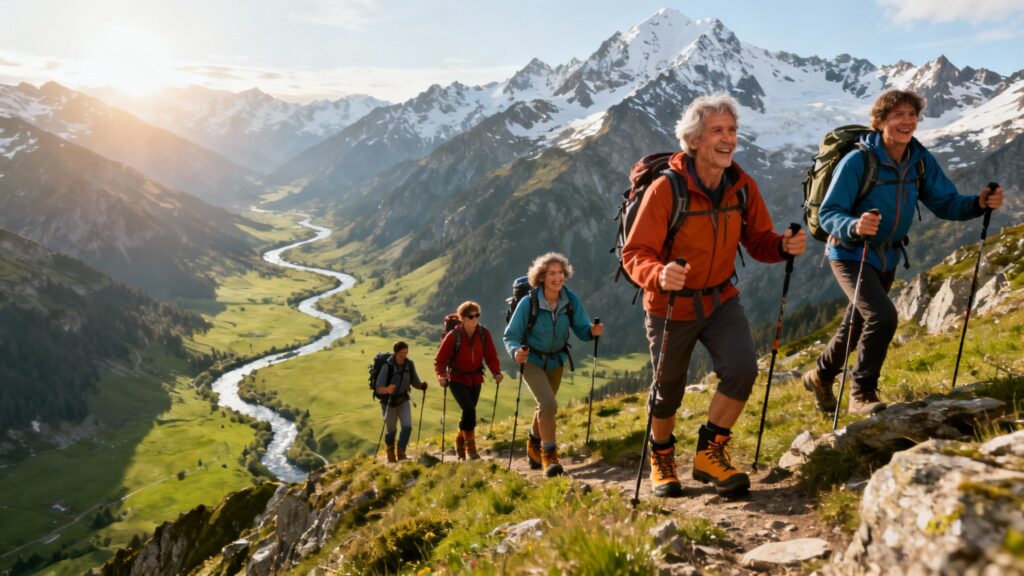
What is Adventure Tourism
Adventure tourism is what happens when regular tourism looks in the mirror and decides it needs to hit the gym. The Adventure Travel Trade Association (yes, that’s a real thing—and yes, their office parties are probably epic) defines it as travel that combines at least two of three elements: physical activity, cultural exchange, and time in nature. In other words, it’s tourism saying, “You know what this vacation needs? A little sweat, a little soul, and a whole lot of fresh air.”
Here’s where it gets interesting—this industry went from $263 billion in 2013 to a whopping $608 billion by 2023. That’s roughly 65% annual growth, which in business terms means “absolutely bonkers successful.” Between 2009 and 2013, adventure tourism grew at 65% annually, making it the overachiever of the travel world. While regular tourism’s all about finding the comfiest lounge chair, adventure tourism’s out there asking, “But what if we made vacation… harder?”
The whole thing rests on having actual professionals guide you through your carefully orchestrated chaos. These aren’t your uncle Bob’s “trust me, I watched a YouTube video” adventures—I’m talking about legit pros who know the line between “thrilling” and “please don’t call the sheriff” kind of thing. Plus, there’s a real emphasis on connecting with local communities—so your adventure trip does not only paint you as an adrenaline junkie, you’re actually helping and supporting real people in real places. Trust me, you’ll be surprise how much help each dollar can do.
Adventure tourism happens in those spots where nature still runs the show. You know, places where your biggest worry isn’t finding good WiFi but whether that rustling in the bushes is friendly wildlife or the kind that makes you very, very quiet. From trekking through Nepal’s ridiculous mountain scenery to zip-lining through Costa Rica’s rainforest (because apparently humans looked at trees and thought, “I bet I could fly between those”), these experiences are all about discovering just how spectacular our planet is when you get off the beaten path.
Types of Adventure Tourism
Adventure tourism comes in more flavors than a fancy ice cream shop, and just like ice cream, there’s something for everyone—whether you prefer vanilla (but make it outdoorsy) or you’re ready to try that experimental flavor that might just change your life.
Soft Adventure Tourism
Soft adventure is basically adventure tourism’s friendly, approachable cousin—the one who shows up to family gatherings with homemade cookies and never judges your life choices. It’s perfect for folks who want excitement without requiring a will update or extensive survival training.
We’re talking day hikes through gorgeous scenery, cycling tours where you actually stop to take photos instead of gasping for breath, and wildlife viewing where the most dangerous thing you’ll encounter is probably sunburn. Think guided nature walks through Costa Rica’s national parks (where the scariest moment is when your guide points out a sloth and you spend twenty minutes trying to spot it), scenic bike rides through French countryside (with wine stops, because this is civilization), and African safaris where you watch lions from the safety of a vehicle with cup holders.
Soft adventure gives you that “I’m basically Bear Grylls” buzz—minus the cautionary tale. On my first “adventure” hike, I showed up with a granola bar and blind optimism; left sweaty, proud, and weirdly obsessed with how the forest smells after rain.
That’s the magic: you learn as you go. A kayak guide once taught me how mangroves act like nature’s kidneys; a sunrise walk had a ranger teaching bird calls by rhythm. You go for the views, come back noticing everything.
And yes—you can walk uphill for more than five minutes without collapsing. It’s school, but fun, with better snacks and a warm meal at the end. Gentle on the nerves, big on the memories.
Hard Adventure Tourism
Hard adventure tourism is for people who look at soft adventure and think, “That’s cute, but where’s the existential crisis?” This is the “hold my protein shake and watch this” category of adventure travel—the domain of folks who consider risk assessment a personality trait.
We’re talking Mount Everest expeditions (because apparently some people think sea level is for quitters), technical rock climbing where your margin for error is approximately zero, backcountry skiing in terrain that makes avalanche warnings sound like friendly suggestions, and multi-day survival situations where your accommodations range from “basic tent” to “hopefully this cave doesn’t have anything living in it.”
Hard adventure tourism requires the kind of preparation that makes wedding planning look casual. You’ll need physical training that goes beyond “I walked to the mailbox twice this week,” skill development that involves learning things like “how not to die in various outdoor scenarios,” and equipment that costs more than some people’s cars.
But here’s the thing about hard adventure tourism—it’s not just about being uncomfortable for the fun of it. There’s something profoundly transformative about pushing yourself way past what you thought was possible and discovering that your limits were more like gentle suggestions. The sense of accomplishment you get from conquering something genuinely difficult? That’s the kind of confidence boost that carries over into every other area of your life.
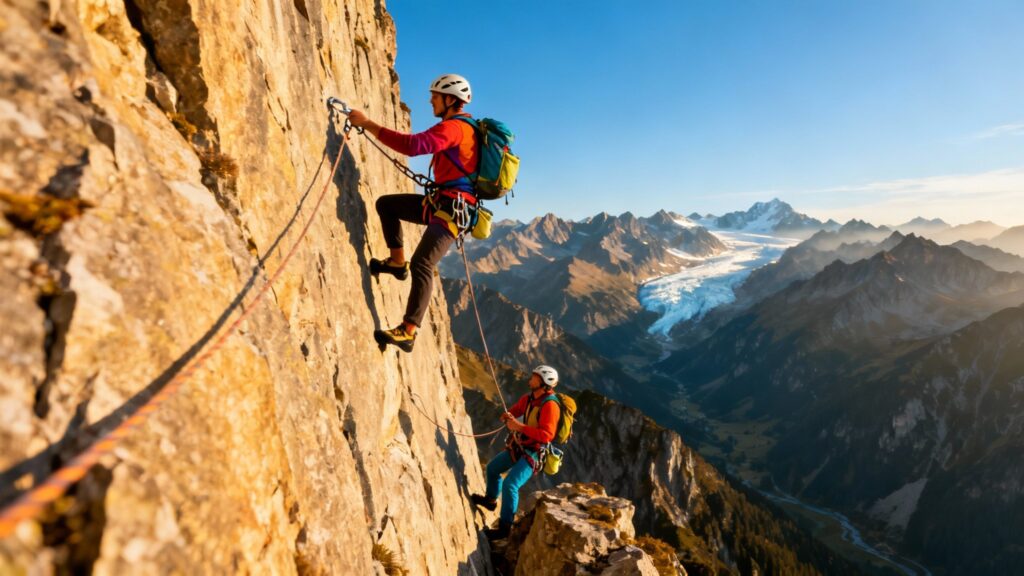
Popular Adventure Activities
Adventure tourism activities are like a buffet for adrenaline junkies—there’s something for every taste, tolerance level, and degree of common sense. Whether you prefer your thrills with a side of civilization or you’re ready to go full “into the wild,” the menu’s got options.
Hiking and Trekking
Hiking is adventure tourism’s gateway drug—it looks innocent enough, but before you know it, you’re researching multi-day expeditions and debating the merits of different backpack brands like your life depends on it (spoiler alert: it might).
I remember I first fell in love with hiking in 2023. There was something about wandering through different rainforests that keeps you connected with nature. I can even say it gave me that “Ferngully” moment. And yes, I was hoping I could see Crysta hovering over the branches.
You’ve got everything from the Cerro Chato volcano trail in Costa Rica, where you hike through rainforest that looks like the set of a nature documentary to reach a lagoon that’ll make your Instagram followers genuinely jealous. Then there’s the Gore Range Trail in Colorado—41.7 miles of “are we there yet?” that’ll test whether your fitness tracker can handle your actual fitness level.
The equipment game for hiking ranges from “I grabbed some water and good intentions” to “I have gear that NASA would envy.” You’ll want moisture-wicking clothes (because cotton kills, as outdoor enthusiasts love to remind everyone), boots that won’t betray you on mile twenty, and navigation tools for when your phone decides that GPS is optional.
Here’s the beautiful thing about hiking and trekking—it scales with your ambition. Start with a nice day hike where the biggest challenge is remembering to bring snacks, then work your way up to multi-day adventures where you carry everything you need to survive and discover muscles you forgot you had. The ISO 3021:2023 safety standards make sure your guided experiences don’t turn into unplanned survival training, which is thoughtful of them.
Water-Based Adventures
Water-based adventures prove that humans are basically just land mammals with commitment issues—we can’t stay away from the water, even when it’s moving really, really fast and making concerning noises.
White-water rafting is like a theme park ride, except the ride is actual geography trying to relocate you downstream in ways that physics finds hilarious. Early season means bigger water and bigger rapids, which translates to more opportunities for what rafting guides cheerfully call “swimming” (and what you’ll call “involuntary exit strategies”).
Scuba diving opens up a whole underwater world that most of us only see in documentaries narrated by British people with soothing voices. You get to float around coral reefs and marine ecosystems while breathing through equipment that would’ve been science fiction a century ago. Just try not to think too hard about the fact that you’re voluntarily putting yourself in an environment where breathing requires technology.
The seasonal nature of water adventures means timing is everything. Hit the rapids early in the season for maximum chaos, or wait until later for a more “I can actually stay in the raft” experience. Either way, professional guides are your friends—they know which rocks are friendly and which ones are just waiting to introduce themselves to your raft in unpleasant ways.
Aerial Adventures
Aerial adventures answer the age-old human question: “What if we could fly, but make it slightly terrifying?” These activities take our species’ bizarre obsession with defying gravity and turn it into vacation entertainment.
Zip lining started in Costa Rica in the 1970s as a way for researchers to study rainforest canopies without having to master tree climbing. Now it’s basically become the gateway drug to aerial adventures—a way to experience controlled falling while taking in scenery that you definitely couldn’t appreciate while plummeting uncontrolled.
The MistRider zip line at Niagara Falls features four parallel lines that let you soar above one of nature’s most impressive water features while questioning your life choices in the best possible way. It’s like flying, if flying involved harnesses and the nagging suspicion that gravity is just waiting for its moment.
For those who think zip lining is too controlled, there’s skydiving and bungee jumping—activities that take the concept of “trust fall” and scale it up to “trust physics.” These require the kind of safety briefings that sound less like instruction and more like last rites, but hey, that’s part of the charm.
If you prefer your aerial thrills with extra safety features, there are TRUBLUE Auto Belays and QUICKflight devices that provide controlled aerial experiences with enhanced safety systems. Think of them as training wheels for people who want to fly but aren’t quite ready for the “what could go wrong?” approach.
Mountain Sports
Mountain sports are for people who look at mountains and think, “You know what that massive pile of rock needs? Me climbing all over it.” These activities turn geological features into personal challenges, which is either inspiring or concerning, depending on your perspective.
Rock climbing ranges from indoor gym experiences (where the biggest danger is comparing yourself to that teenager who’s basically part spider) to outdoor expeditions on actual rock faces that have been there for millions of years, just waiting for humans to show up with ropes and questionable judgment.
Mountain biking offers trail systems that range from “pleasant ride through nature” to “why did I think this was a good idea?” with color-coded difficulty levels that let you know exactly how much you’re about to regret your choices. Green trails are for building confidence, black trails are for testing whether your health insurance is current.
Skiing and snowboarding across the Rocky Mountains from Alaska to New Mexico provide winter adventure opportunities that range from groomed resort slopes (where the biggest challenge is lift ticket prices) to backcountry terrain that requires avalanche training and the kind of equipment that makes you look like you’re preparing for an Arctic expedition.
The progression nature of mountain sports means you start with basic skills and work your way up to techniques that would’ve seemed impossible when you started. Professional instruction isn’t just helpful—it’s the difference between “epic adventure story” and “expensive rescue operation.”
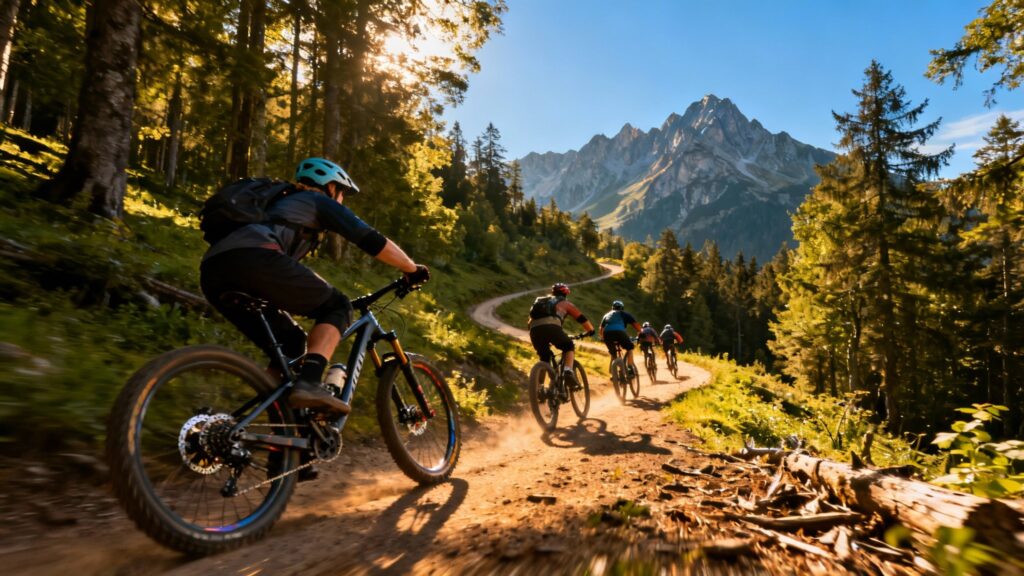
Top Adventure Destinations
The world’s basically a giant adventure playground, if you know where to look and aren’t too attached to comfort. These destinations have figured out how to turn their natural assets into thrilling experiences while somehow managing not to ruin what makes them special in the first place.
New Zealand’s earned its reputation as the adventure capital of the world by essentially turning the entire country into an outdoor theme park. They’ve got bungee jumping (because someone looked at a bridge and thought, “I bet I could jump off that”), world-class kayaking, and scenery that looks like it was designed by someone who really, really loved dramatic landscapes. It’s like Middle Earth, but with better safety regulations.
Costa Rica’s basically perfected the art of adventure tourism—zip lining through rainforest canopies that’ll make you feel like a very slow, very careful monkey, volcano hiking where you can explore ecosystems that change every hundred feet of elevation, and rainforest exploration that’s like nature documentary immersion therapy. Plus, they’ve managed to build a tourism industry around conservation, which is either brilliant or the most elaborate guilt trip ever designed.
The Rocky Mountain region, including Colorado’s Gore Range Trail and ski resorts that make you question why anyone lives at sea level, provides year-round adventures for people who think flat terrain is boring. Whether you’re hiking in summer or skiing in winter, you’re basically guaranteed to discover muscles you forgot you had while surrounded by scenery that makes you understand why people write poetry about mountains.
Nepal’s Khumbu region near Mount Everest attracts people who think regular hiking is too easy and altitude sickness sounds like an interesting challenge. You get to experience Sherpa culture while trekking through landscapes that most people only see in documentaries, assuming they can handle the whole “breathing is suddenly much harder” aspect of high-altitude adventure.
European destinations like the Tour du Mont Blanc Trek let you combine adventure with the kind of cultural heritage that makes you feel sophisticated while you’re sweating profusely. You’re basically hiking through a history book, except the history book has amazing cheese and wine stops.
Patagonia provides extreme adventures in environments so pristine they’ll make you understand why people become environmental activists. It’s the kind of place where you realize how small you are in the best possible way, assuming you can handle being very, very far from civilization.
Benefits of Adventure Tourism
Adventure tourism’s benefits go way beyond getting great photos for social media (though let’s be honest, the photos are pretty spectacular). These experiences mess with your life in the best possible ways, creating changes that stick around long after you’ve returned to your regularly scheduled existence.
Personal Benefits
Physical fitness improvement happens almost by accident when you’re having too much fun to remember you’re basically doing a really entertaining workout. Unlike gym routines that feel like punishment for enjoying food, adventure activities make fitness improvement feel like play time for adults who’ve forgotten how to have fun without screens.
Mental health benefits come from the combination of endorphin release (your brain’s natural way of saying “thanks for the adventure”) and stress reduction that happens when you’re too busy not falling off things to worry about your email inbox. Research shows outdoor activities can significantly reduce anxiety and depression, which makes sense—it’s hard to catastrophize about your life when you’re focused on not becoming a cautionary tale.
Self-confidence building might be the sneakiest benefit of adventure tourism. Turns out, when you prove to yourself that you can handle challenges you never thought possible, that confidence starts showing up in other areas of your life. It’s like discovering you had superpowers all along, except your superpower is being braver than you thought.
Cultural awareness develops naturally when you’re interacting with communities who’ve figured out how to live in places you can barely visit without extensive gear. These interactions break down the kind of stereotypes and assumptions that come from getting all your cultural knowledge from movies and social media.
Social and Cultural Benefits
Cross-cultural understanding happens when you realize that people everywhere are basically dealing with the same human stuff, just in different landscapes and languages. Adventure tourism creates those “we’re all just figuring it out as we go” moments that make you feel connected to humanity in general, which is surprisingly comforting.
Personal growth opportunities in adventure tourism can’t be replicated by staying home and reading self-help books (though we respect the effort). There’s something about combining physical challenges with cultural immersion and natural beauty that creates the perfect conditions for those “lightbulb moment” experiences that actually stick.
The industry attracts a pretty diverse crowd—57% female participation in 2022 proves that adventure isn’t just for the stereotypical “extreme sports bro” demographic. Higher education demographics drive growth because educated travelers have apparently figured out that collecting experiences beats collecting stuff, which explains why your Instagram feed is full of people doing things that look simultaneously amazing and terrifying.
Adventure tourism creates space for the kind of deep personal reflection that modern life usually prevents. When you’re surrounded by natural beauty and dealing with just enough challenge to keep things interesting, your brain finally gets permission to think about big-picture life stuff instead of just surviving the daily grind.
Safety Standards and Regulations
Professional adventure tourism has figured out how to keep the excitement while minimizing the “this could go very wrong very quickly” aspects that make your family worry when you announce your vacation plans. These systems ensure that your adventure stays in the “great story” category instead of veering into “cautionary tale” territory.
ISO Safety Management Systems
ISO 21101:2014 is basically the instruction manual for adventure tourism operators who want to provide thrills without lawsuits. It’s step-by-step guidance for how small and medium operators can build comprehensive safety systems that address all the creative ways things can go sideways when you’re deliberately putting people in challenging environments.
Risk assessment protocols require operators to think through all the “what if” scenarios that most of us prefer not to consider. This includes everything from “what if it rains?” to “what if someone decides they’re suddenly afraid of heights while already attached to a zip line?” These assessments get updated regularly because mountains, weather, and human behavior are all surprisingly creative when it comes to presenting new challenges.
Emergency response procedures are the adventure tourism equivalent of fire drills, except the stakes are higher and the scenarios are more specific. These include communication protocols (because “help, we’re somewhere in the mountains” isn’t as useful as you’d think), evacuation plans, and coordination with local emergency services who’ve probably seen it all before.
Regular safety audits keep operators honest about whether their safety systems actually work in real-world conditions. These typically involve outside experts who come in and basically play “find the safety problem” to identify issues before they become actual emergencies.
Leadership and Information Standards
ISO 21102:2020 makes sure your adventure guide actually knows what they’re doing, which seems like it should be obvious but apparently needed to be written down officially. These standards establish competency requirements that ensure guides possess the technical skills, safety knowledge, and leadership capabilities needed for their specific activities—because “I’ve watched a lot of adventure movies” isn’t actually a qualification.
ISO 21103:2014 requires clear participant information before, during, and after activities, which basically means no surprises about what you’re getting yourself into. This information has to be provided in language and format that participants can actually understand and remember, because “you should have read the fine print” isn’t a great safety strategy.
Professional certification and ongoing training requirements ensure that guides don’t just rest on their initial training and hope for the best. These requirements typically include technical skill updates, first aid certification, and continuing education that keeps guides current with best practices in safety and risk management.
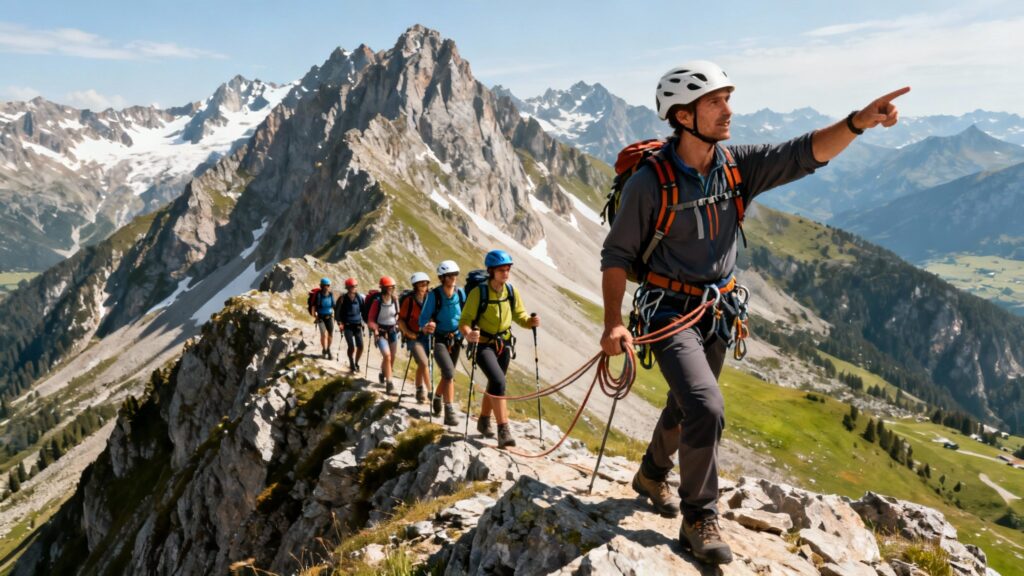
Clear communication of risks and safety measures helps participants make informed decisions about whether they’re actually ready for what they’ve signed up for. This communication gets tailored to participant experience levels and cultural backgrounds because “one size fits all” doesn’t work when safety is involved.
Economic and Community Impact
Adventure tourism turns out to be one of those rare industries that actually makes places better instead of just extracting value and moving on. It’s like tourism grew up and decided to be responsible, which is both surprising and encouraging.
About 65% of adventure tourism spending goes directly to local economies, compared to mass tourism that often channels profits to international corporations while leaving communities with the cleanup bills. This high local benefit percentage happens because adventure tourism relies on local guides, accommodations, transportation, and services that can’t be easily outsourced to some corporate headquarters in a different country.
High-value experiences like Mount Everest expeditions generate serious local revenue through guide services, porter employment, equipment rental, and hospitality services. These expeditions often employ dozens of local workers and create significant income for mountain communities that don’t have a lot of other economic opportunities (unless you count “subsistence farming at altitude” as a growth industry).
Infrastructure development driven by adventure tourism often includes schools, sports facilities, and environmental services that benefit entire communities beyond just tourism employment. This development improves quality of life for residents while supporting sustainable tourism growth, which creates a positive feedback loop that makes everyone’s lives better.
Local employment opportunities in guiding, hospitality, and support services provide career paths that let community members stay in their home areas instead of migrating to cities for work. These opportunities often preserve traditional knowledge and skills while creating economic value, which is basically the economic development equivalent of having your cake and eating it too.
Community empowerment develops through responsible tourism partnerships that recognize local expertise and cultural knowledge. These partnerships ensure that communities maintain control over tourism development while benefiting from the economic opportunities that adventure tourism provides, which beats the alternative of having outsiders show up and take over.
Environmental Considerations and Sustainability
Adventure tourism’s relationship with the environment is like dating someone whose main attraction is also their most vulnerable quality—you better treat them right, or you’ll lose what you fell in love with in the first place.
ISO 20611:2018 provides guidelines for sustainable practices that help operators minimize environmental impact while supporting local communities and conservation efforts. These guidelines address everything from waste management (because “leave no trace” includes the obvious stuff) to wildlife interaction protocols (because animals didn’t sign up to be your photo props).
Environmental protection requires balancing tourism demand with conservation needs, which is like trying to let everyone see the Mona Lisa without wearing it out from too much attention. This balance often requires visitor quotas, seasonal restrictions, and careful route planning to distribute impact across areas that can handle it without getting loved to death.
Natural beauty preservation is the primary draw for most adventure tourism destinations, which creates economic incentives for environmental protection that might not otherwise exist. This economic value helps justify conservation efforts and provides resources for environmental protection programs, turning conservation from an expense into an investment.
Government policies that protect environment and culture support long-term sustainability by establishing legal frameworks for responsible tourism development. These policies often include environmental impact assessments, protected area designations, and regulations governing tourism operations in sensitive areas, because apparently we need rules to prevent people from ruining the places they love to visit.
The risk of biodiversity loss and declining tourism revenue without proper resource protection creates strong motivation for effective conservation measures. Destinations that fail to protect their natural resources often experience declining tourism revenue as environmental degradation reduces their appeal, which is the free market’s way of saying “you should have taken better care of that.”
Adventure tourism operators increasingly recognize that their long-term business success depends on maintaining the environmental quality that attracts their customers. This recognition has led to industry-wide adoption of sustainable practices and support for conservation initiatives, proving that enlightened self-interest can actually work for everyone.
How to Get Started in Adventure Tourism
Starting your adventure tourism journey is like learning to swim—you want to start in the shallow end, not by jumping off the high dive while hoping for the best. The Adventure Travel Trade Association provides resources for finding certified operators and destinations that meet professional standards, which beats the “let’s just wing it” approach to adventure planning.
Assessing your personal fitness level and risk tolerance helps you choose activities that provide appropriate challenge without exceeding your “nope, absolutely not” threshold. Honest self-evaluation prevents the awkward situation of discovering your limits in front of strangers in uncomfortable circumstances, which nobody wants to remember when they’re trying to enjoy their vacation photos.
Beginner-friendly options like guided day hikes provide excellent introduction to adventure tourism without requiring significant equipment investment or the kind of preparation that makes adventure travel feel like a second job. These experiences let new adventurers develop skills and confidence before advancing to activities that require waiver signing and emergency contact information.
Verifying professional guide services should include checking safety records, certifications, and accreditations to ensure operators meet industry standards for safety and professionalism. Reputable operators share information about their safety record, guide qualifications, and emergency procedures because they’re proud of their safety practices, not because they’re required to disclose them by insurance companies.
Equipment research and training become important as you advance to more technical activities or independent adventures. Understanding equipment requirements and receiving appropriate training prevent accidents and ensure you can actually enjoy your adventures instead of spending them wondering if you’re using everything correctly.
Starting with local adventures lets you develop skills and experience close to home before investing in international travel to exotic destinations. Local adventure opportunities often provide excellent training grounds for developing the skills and confidence needed for more ambitious adventures, plus they’re easier on the budget while you’re figuring out what you actually enjoy.
Building adventure tourism experience gradually helps develop the skills, confidence, and judgment needed for more challenging experiences. This progression approach reduces risk while maximizing enjoyment and learning, which beats the “trial by fire” method of adventure skill development.
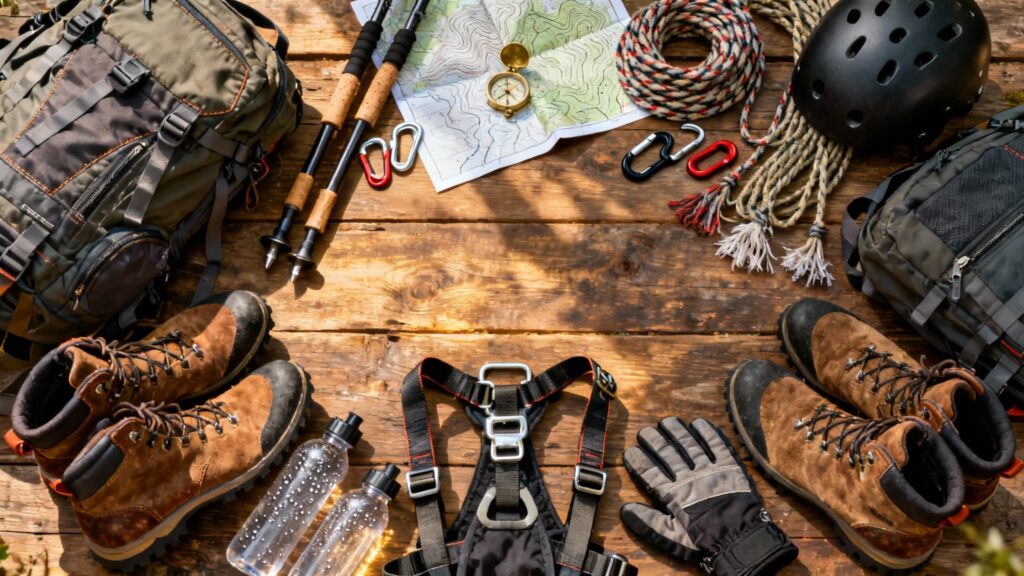
Adventure tourism represents one of the most rewarding ways to explore our world while challenging yourself and contributing to the places you visit. The industry’s growth reflects increasing recognition that meaningful travel experiences provide value that extends way beyond simple recreation—they change how you see yourself and the world.
Whether you’re drawn to the adrenaline rush of extreme sports, the cultural immersion of community-based adventures, or the natural beauty of wilderness exploration, adventure tourism offers opportunities for personal growth and world discovery that traditional tourism simply can’t match. The key lies in choosing experiences that match your current capabilities while providing enough challenge to help you grow.
As you start your adventure tourism journey, remember that the most rewarding experiences often come from stepping outside your comfort zone while maintaining respect for the environments and communities you visit.
FAQ
What’s the difference between adventure tourism and regular tourism?
Adventure tourism requires you to actually do stuff—physical activity, cultural immersion, or natural environment engagement—while regular tourism focuses on relaxation and the fine art of poolside beverage consumption. Adventure tourism targets remote, less-crowded destinations where the biggest challenge might be finding cell service, versus popular tourist hotspots where the biggest challenge is finding a good photo angle without strangers in it. Adventure travelers spend more per trip ($3,000 average) but contribute more directly to local economies, with 65% of spending benefiting local communities—which means your vacation dollars actually help the places you’re visiting instead of just enriching some distant corporate headquarters.
Do I need special skills or training for adventure tourism?
Soft adventure activities like day hiking and zip lining require minimal prior experience beyond basic “don’t do obviously dangerous things” common sense, with professional guides providing instruction and safety oversight. Hard adventure activities like mountaineering and backcountry skiing require specialized training and equipment before participation—these aren’t “figure it out as you go” situations. Most adventure tourism operators offer beginner-friendly options with comprehensive safety briefings and equipment provision, making adventure tourism accessible to people with varying experience levels, which means you don’t need to be a Navy SEAL to have fun outdoors.
How do I choose a reputable adventure tourism operator?
Verify ISO safety standard compliance (21101, 21102, 21103) and Adventure Travel Trade Association membership when selecting operators—these aren’t just fancy certificates to hang on walls, they represent actual safety standards. Check guide certifications, safety records, and insurance coverage to ensure professional operation standards, because “trust me, I know what I’m doing” isn’t actually a professional qualification. Read reviews focusing on safety practices, environmental responsibility, and local community engagement rather than just “the food was great.” Ensure clear communication of risks, required fitness levels, and emergency procedures before booking—if an operator gets evasive about safety questions, that’s your cue to keep looking.
What should I expect to spend on an adventure tourism trip?
Average adventure tourism trips cost $3,000 for 8 days including guides, equipment, and accommodations, though prices vary significantly based on destination and whether your idea of adventure includes luxury amenities or sleeping on the ground. Soft adventure options with luxury accommodations typically cost more than basic camping expeditions, because comfort comes at a premium when you’re in the middle of nowhere. High-end expeditions like Mount Everest climbs can cost $35,000-$100,000 due to specialized equipment and extensive support services—these aren’t impulse purchases. Budget options include self-guided day trips and local adventure activities starting from $50-200 per day, proving that adventure doesn’t have to bankrupt you.
Is adventure tourism environmentally responsible?
Properly managed adventure tourism supports conservation through economic incentives for environmental protection, creating value for preserving natural areas instead of developing them into strip malls. ISO 20611:2018 sustainability standards ensure operators minimize environmental impact while supporting local communities and conservation efforts—it’s not just wishful thinking, there are actual guidelines. Small group sizes and remote destinations typically have lower environmental impact than mass tourism, because cruise ships full of people don’t exactly scream “low impact.” Adventure tourism funding often supports local conservation projects, waste management, and environmental education programs, making it a force for environmental protection when properly managed—which beats the alternative of places getting loved to death by irresponsible tourism.

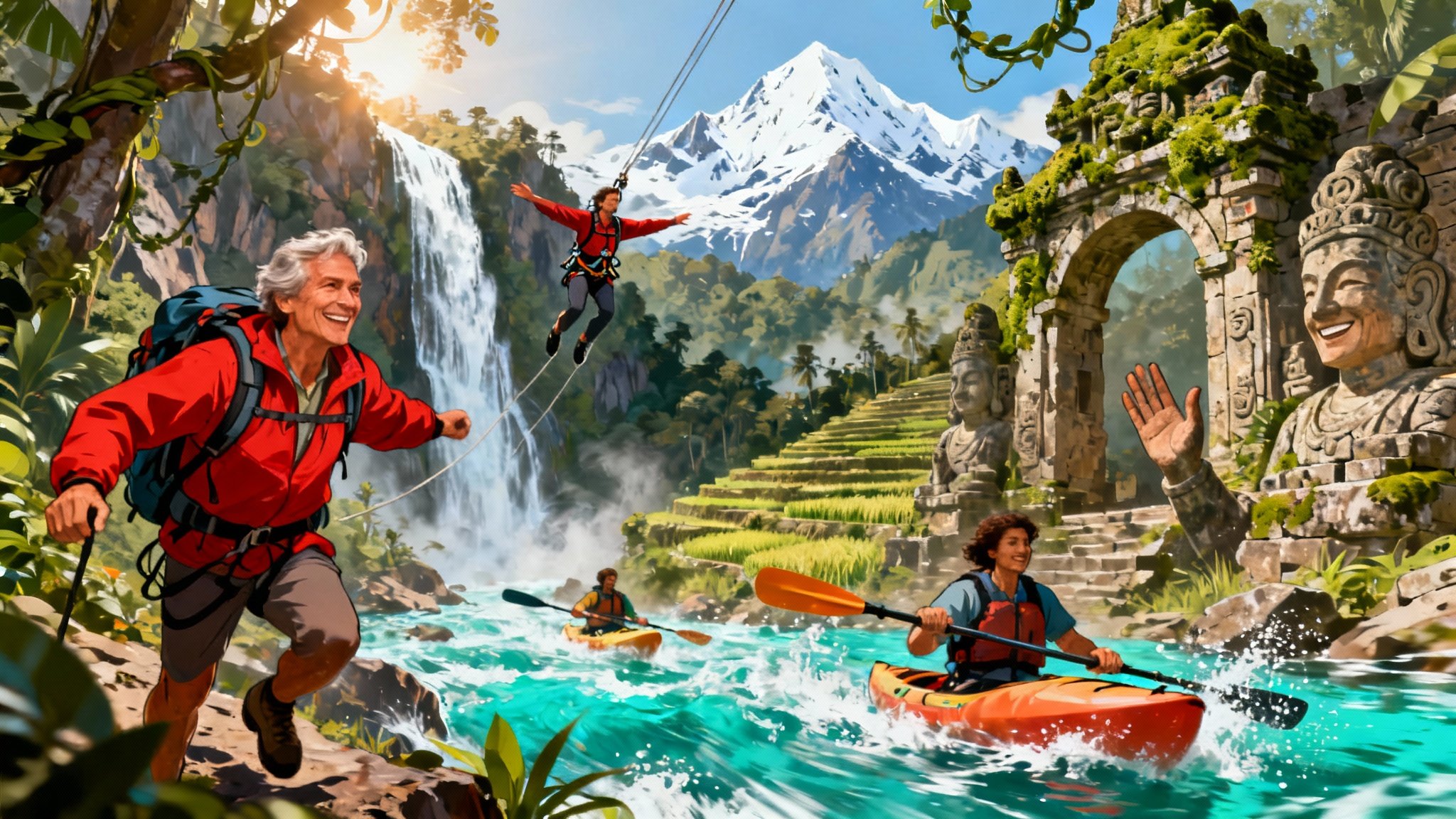
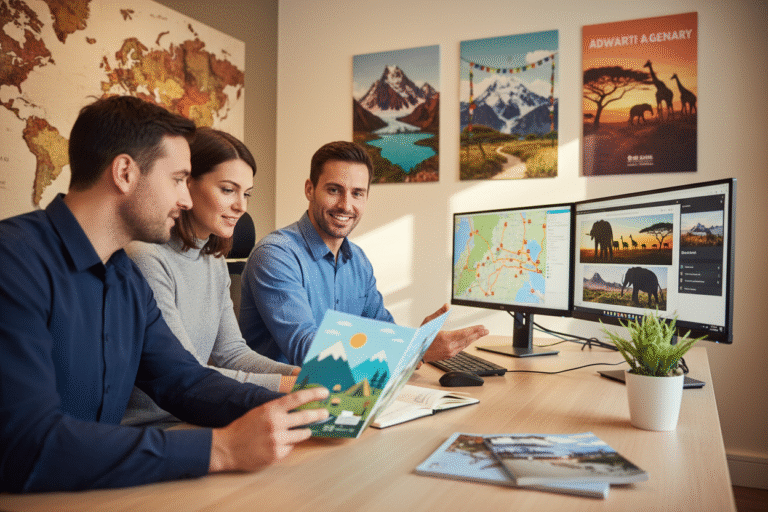
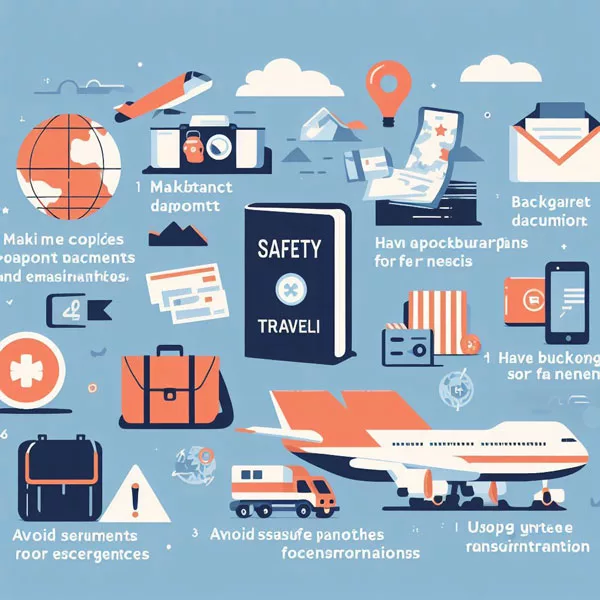
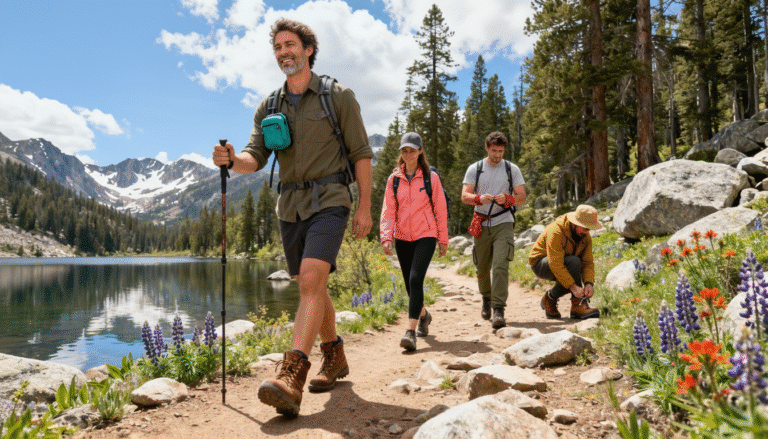



One Comment
Comments are closed.